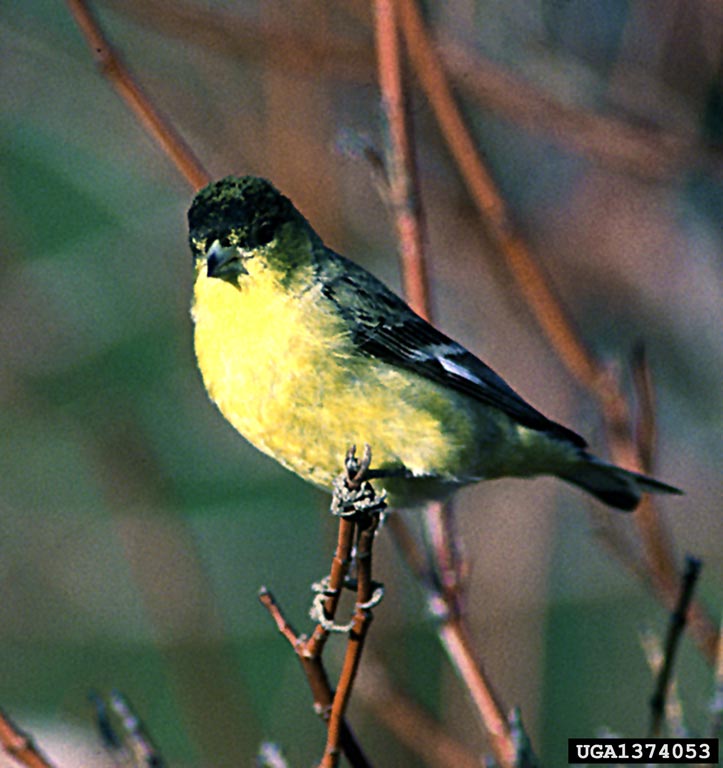|
| Query: Passeriformes | Result: 1321st of 1418 | |
Lesser Goldfinch (Carduelis psaltria) <!--쇠금방울새-->
| Subject: | Lesser Goldfinch (Carduelis psaltria)
| | Poster: | Phoby (phoby@notmyphoto.com)
| |

| Resolution: 723x768
File Size: 66601 Bytes
Upload Date: 2005:11:21 10:52:34
|
lesser goldfinch
Aves > Passeriformes > Fringillidae
Carduelis psaltria (Say, 1823)
Photographer: Terry Spivey, USDA Forest Service
Descriptor: Adult(s)
Location: United States
Image Citation:
Terry Spivey, USDA Forest Service, www.forestryimages.org
Image Use:
This image may be copied and used, in whole or in part, for any non-profit, educational purpose provided that all reproductions bear an appropriate credit. Any commercial or other use of the image requires the written permission of the photographer or contact organization, and Forestry Images.
The lesser goldfinch (Carduelis psaltria or Spinus psaltria) is a small songbird of the Americas. It may be the smallest true finch in the world. The lesser goldfinches ranges from the southwestern United States (near the coast, as far north as extreme southwestern Washington) to Venezuela and Peru. It migrates from the colder parts of its U.S. range.
|
Comments |
|---|
| | Guest |
|
Scientific Name: Spinus psaltria (Say, 1823)
Common Names: Lesser Goldfinch
French: Chardonneret mineur; German: Mexikozeisig; Spanish: Jilguero menor
Taxonomy: Fringilla psaltria Say, 1822, , Arkansas River near mountains [= near Colorado Springs], Colorado, USA.
Synonyms: Carduelis psaltria (Say, 1823) |
^o^
Animal Pictures Archive for smart phones
^o^
|
|
|